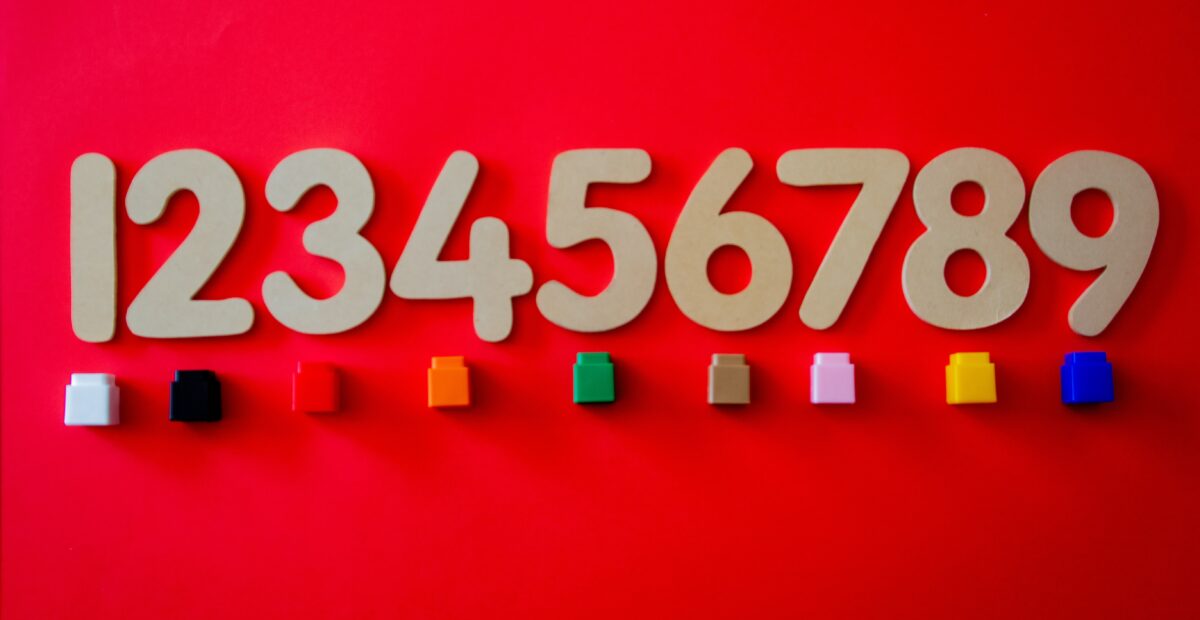What Are The Different Types of Dyscalculia?

Featured Image by Magda Ehlers, Pexels
What do Cher, Benjamin Franklin, Hans Christian Andersen, and Robbie Williams have in common? They have or were thought to have had dyscalculia, which caused them to have maths anxiety and struggle with the subject. Despite their anxieties and struggles, they had successful roles in singing, inventing, and writing.
Although many people believe dyscalculia is the maths version of dyslexia, this is misleading because dyslexia means problems with reading and dyscalculia means problems with maths. However, not many people know that there are many different types of dyscalculia. This is because dyscalculia is not as common as other types of neurodiversity such as dyslexia, dyspraxia, autism, and ADHD.
What is dyscalculia?
Dyscalculia is a learning difference where people find it difficult to understand numbers. This can lead to a diverse range of difficulties with mathematics. It is unexpected in relation to age, level of education and experience. Dyscalculia can occur across all ages and abilities.
Common signs and symptoms of dyscalculia include difficulties with:
- Grasping the meaning of concepts or quantities, such as biggest versus smallest.
- Understanding that the numeral “5” is the same as the word “five,” and they both mean, “five items,” for example.
- Remembering maths facts at school, college, or university, such as times tables.
- Counting money or working out change.
- Estimating time.
- Judging speed or distance.
- Understanding the logic behind maths.
- Holding numbers in one’s head while solving problems.
How does dyscalculia affect the brain?
Lack of focus

Image by Ketut Subiyanto, Pexels
Like those with ADHD, those with dyscalculia can find it hard to focus. The difficulty of people with dyscalculia focusing is related to the pattern of cognitive deterioration linked to dyslexia. The structural deficit in these connections is also related to inhibition, which affects the mind’s sharpness. This makes it harder for the person to learn maths.
A person with dyscalculia can struggle significantly with attention and focus to maths-related tasks due to challenges in attending to a specific task for a specific amount of time without becoming distracted by internal or external factors. Attention and focus are particularly important when learning new maths skills, although someone with dyscalculia can find it difficult to display these abilities.
Divided attention
Divided attention is related to the ability to multitask, e.g., listening to music whilst writing a blog post. A deficit in this skill means a person with dyscalculia can get easily distracted and can quickly become tired when they attempt to multitask. Not only can people with dyslexia struggle to use the division function in maths, but they can also have difficulty with divided attention.
According to Gross-Tsur, Willburger, Haberstroh, Schulte-Korne et al, many children with mathematical deficits also display impairments in reading or attention. This shows that children with dyscalculia could also have dyslexia or ADHD.
Short-term memory

Image by DS stories, Pexels
This is the capacity to store a small amount of information in the mind and keep it readily available for a short period of time. In terms of maths, remembering a telephone number, recalling the distance to a location, and knowing 2 + 2 = 4 are examples of short-term memory. Short-term memory in maths also enables the person to remember the maths problem as they work on it, such as the number amounts, the symbols, and the order in which they appear.
A person with dyscalculia may struggle with working memory, as they may not visually process numbers on a page during a maths lesson in an educational setting. This makes it difficult for the person to recall accurately.
Slow processing speed
Processing speed involves one or more of these functions:
- The amount of time it takes to perceive and process information.
- Formulating or enacting a response.
In simpler terms, processing speed means how long it takes to get things done.
There are three main components of processing speed (Burgess, 2016):
- Visual processing. How quickly a person’s eyes perceive information and relay it to the brain, such as reading directions.
- Auditory processing. How quickly a person hears a stimulus and reacts to it, such as participating in a discussion.
- Motor speed. How long a person’s fine-motor agility is, such as completing timed maths sheets if they are a student in an academic setting.
People with dyscalculia can have a slower processing speed than their non-dyscalculic peers can. The processing speed can also be slower in those who have a co-occurring condition, such as dyslexia or ADHD, than those who just have dyscalculia.
What are the different types of dyscalculia?
Verbal dyscalculia

Image by Andrea Piacquadio, Pexels
This is characterised by a difficulty with naming and understanding the mathematical concepts that are presented verbally. People with this type of dyscalculia can read or write numbers, but they have a hard time recognising them when they are presented verbally.
A person with verbal dyscalculia can also find it difficult to write the numbers or equations when someone else dictates them to him or her. While a person with dyscalculia is okay with writing numbers when they copy them from a source, the results do not come out as expected when someone gives them the numbers verbally. The dyscalculic person also cannot name the operational signs or numbers.
Practognostic dyscalculia
This is characterised by a difficulty with translating an abstract mathematical concept into a real concept. People with this type of dyscalculia can understand mathematical concepts, but they have trouble listing, comparing, and manipulating mathematical equations.
This type of dyscalculia also refers to the inability to differentiate between quantity and values of things people who have it come across in daily life. For example, they may find it difficult to compare objects to determine which one is larger. Those people can find it hard to work with actual volumes in addition to equations and quantities.
Lexical dyscalculia

Image by Karolina Grabowska, Pexels
This means trouble with reading and understanding mathematical symbols and numbers, as well as mathematical expressions or equations. This is like difficulty with reading and understanding words, letters, and punctuation in dyslexia, hence the name lexical dyscalculia. A person with lexical dyscalculia can understand the concepts when they are spoken, but they may have trouble with writing or understanding them.
Lexical dyscalculia is the opposite to verbal dyscalculia. When someone asks a person with this type of dyscalculia to write a number or an equation by copying the numbers or symbols through a visual medium, they just give up. However, a person with lexical dyscalculia can work an equation when someone verbally dictates the instructions to them.
Graphical dyscalculia

Image by lil artsy, Pexels
This is when someone with this type of dyscalculia finds it difficult to write mathematical symbols. They can understand the mathematical concepts, but they struggle to read, write, or use the correct corresponding symbols.
A person with graphical dyscalculia can have good mental arithmetic; however, like those with lexical dyscalculia, they find it difficult to identify or complete the mathematical operations when they see them in a written form. They can struggle to read, write, identify, or perform mathematical operations, symbols, and formulae.
Ideognostical dyscalculia

Image by Liza Summer, Pexels
This means difficulty with carrying out mental operations without using numbers to answer maths problems and understand mathematical concepts. People with this type of dyscalculia may also have a hard time remembering mathematical concepts after learning them.
While one session of maths can run smoothly for an ideognostical dyscalculic in an academic setting, they can struggle to recall what they learnt in the next session. A person with this type of dyscalculia can have trouble with identifying which sequence of numbers is larger or smaller, for instance. This type of dyscalculia is not limited to oral or written understanding; it is a generalised difficulty with understanding maths and numbers.
Operational dyscalculia
This type of dyscalculia means a difficulty to complete written or spoken mathematical operations or calculations. Someone with operational dyscalculia can understand numbers and the relationships between them, but they will have trouble manipulating numbers and mathematical symbols in the calculation process.
While an operational dyscalculic person can differentiate bigger or smaller numbers, they cannot perform mathematical operations like addition, subtraction, multiplication, and division. Operational dyscalculia also involves remembering or memorising maths rules.
Dyscalculia is a learning difference where people misunderstand numbers regardless of age and ability. It can affect the brain in many ways and there are six different types or subtypes of dyscalculia.
If you think you might have dyscalculia, you can take our online dyscalculia test. Although this test is not intended to diagnose dyscalculia, you can use it as a starting point to discuss it with a medical professional who will determine if you have dyscalculia or not.
Useful links
Difference between dyscalculia and dyslexia
How can you manage dyscalculia in the workplace?




